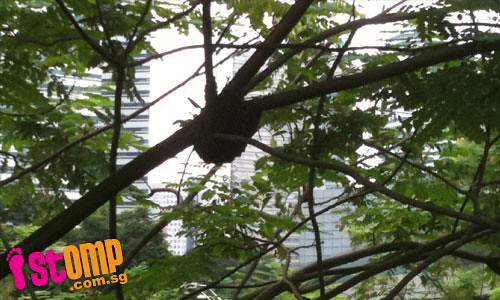
STOMPer SockWei saw a swarm of bees at a walkway outside Suntec City. It appears that their beehive is in a nearby tree.
The STOMPer said:
"I saw a swarm of bees at the Suntec City walkway towards Shaw Tower.
"I was too slow to capture a picture but later I scouted around & found the beehive.
"Wondering whether Suntec City management will be removing the beehive? PC show starts today."
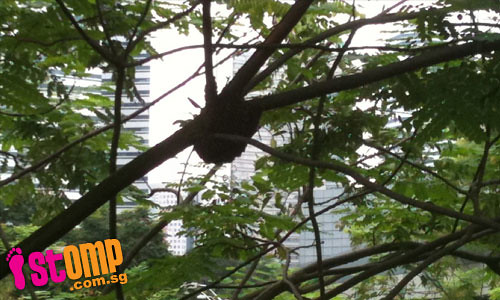

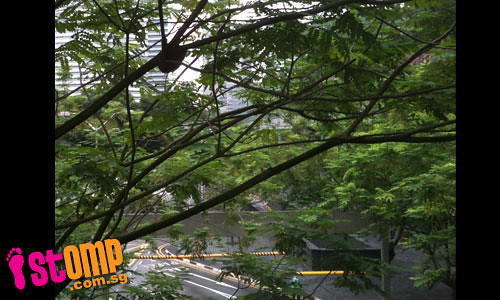

Among the many insect species that we are bound to encounter in urban Singapore, stinging insects such as bees, wasps and hornets are definitely among those that are often discussed, due to the possible risk of people getting stung. While the threat is real, it is definitely exaggerated to some degree; after all, these insects are quite common, yet we rarely hear about swarms of bees or hornets attacking people.
Instead of regarding honeybees in urban areas as a threat to human health and safety, perhaps education could help change mindsets, and see how honeybees, along with various other pollinators, helping to propagate many of the plants that make us a Garden City. Not only can it play a part in getting people to understand the importance of pollinators in horticulture and agriculture, and encourage interest in the natural world in general, it is also a way to earn some income through the production and sale of honey. Urban apiculture is a growing trend elsewhere around the world, partly due to fears of declining honeybee populations* and so-called colony collapse disorder.
Instead of just vegetable gardens and fruit trees, what about community farming on a more ambitious level? Ponds stocked with fish, a little chicken run with hens raised for egg-laying, and perhaps a bee hive with regular honey harvests?
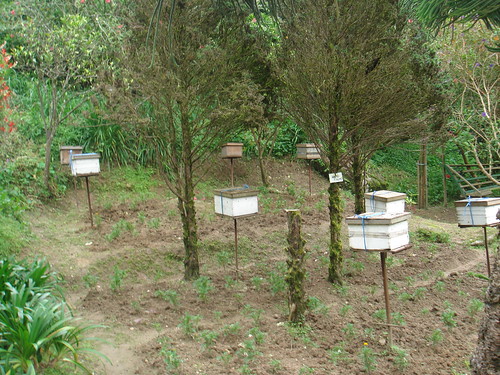
Beehives, Cameron Highlands;
(Photo by yfchan)
*This apparent decline in honeybees is seen in North America and Europe, where western honeybees (Apis mellifera) are used. In this region, where the Asian honeybee (Apis cerana) is the species more commonly kept for honey (although there is an increasing number of hives stocked with western honeybees), this problem does not seem to exist. Still, beekeeping is increasingly being seen as a potential business opportunity.
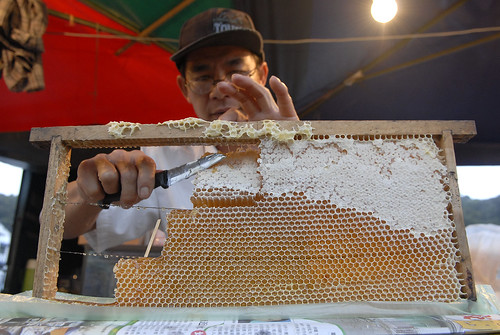
Honey being sold at night market, Cameron Highlands;
(Photo by www.shaifulr.com)